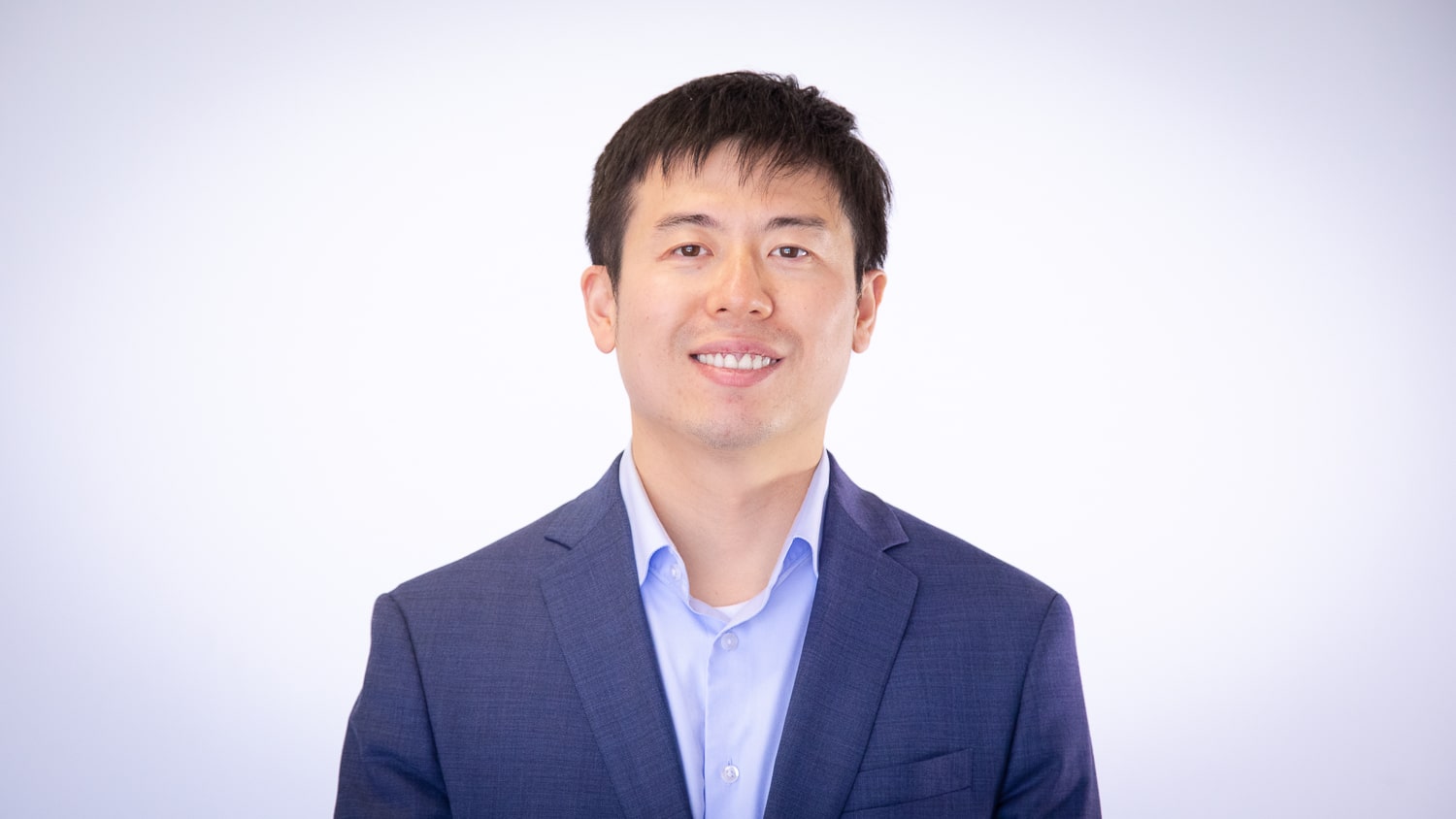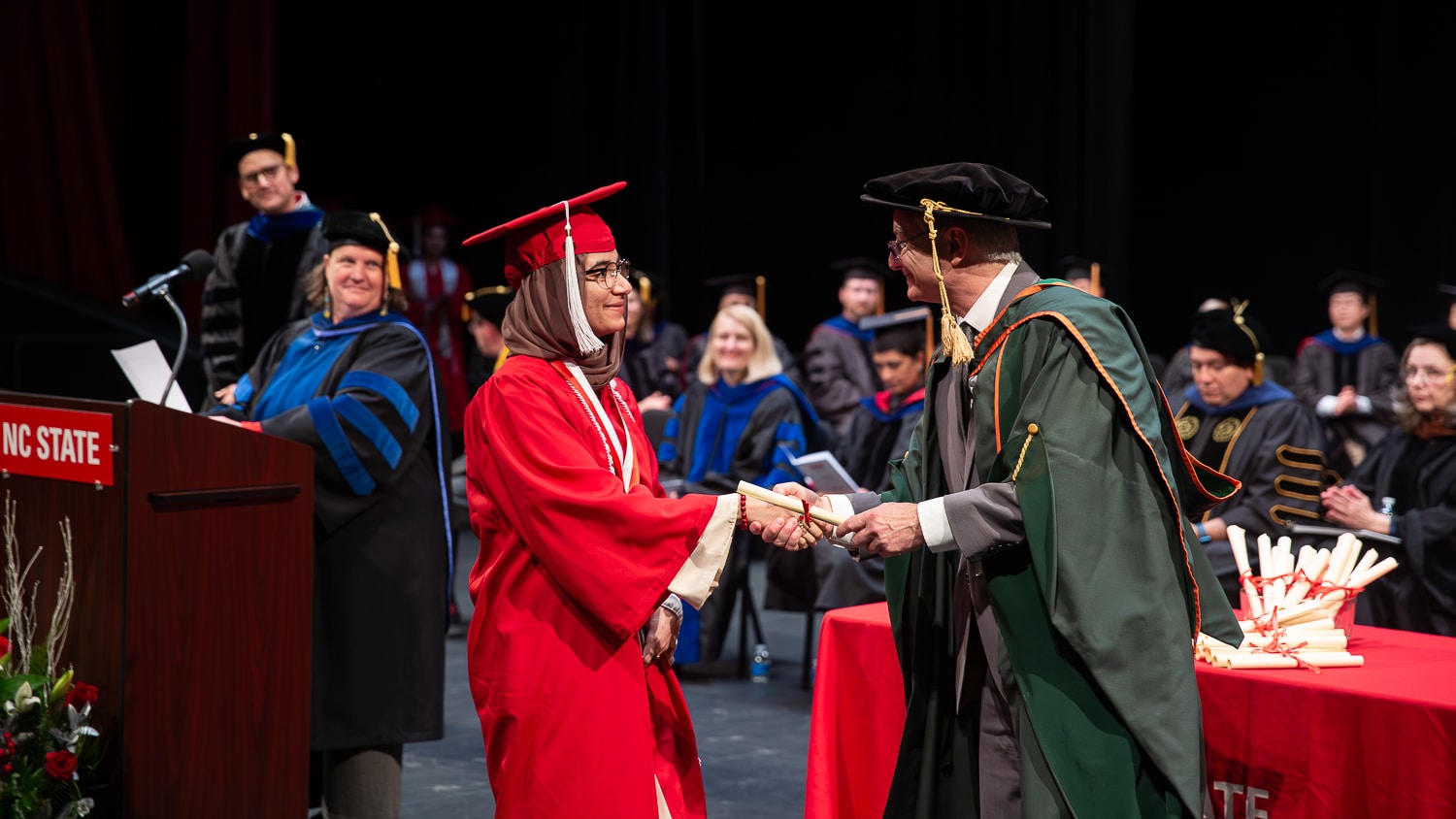No, Maternity Gowns Don’t Have to be That Uncomfortable
Meet new Wilson College faculty member Gloria Hwang

By Sarah Stone
For Assistant Professor Chanmi “Gloria” Hwang, apparel research is an avenue for making the world a more welcoming place for the people in her life.
“The functions of clothing have evolved from a means of protecting human beings from the weather, to an aesthetic purpose and to, now, a way to augment or enhance quality of life through technology innovation. So, it’s really the interdisciplinary nature of clothing that really attracted me to the field,” Hwang says. “My research ideas really come from people around me.”
So far, that research has taken the form of 3D prototyping for baby boomer activewear inspired by her mother, veiled activewear inspired by a Muslim friend who wears a hijab, and a new pattern for maternity gowns.
“Hospital gowns are usually designed to be one-size-fit-all garments and they have these full-back openings that are physically and emotionally uncomfortable and not functional,” she says.
After conducting market research and focus group interviews at a local hospital, Hwang used computer-aided design (CAD) to develop a new, functional design for maternity gowns that could be mass produced. The new pattern, which was patent approved just a few months ago, splits the traditional gown into a two-piece set and adds a re-adjustable waistband. It also includes a bra insert and features that will make it easier for new mothers to breastfeed.
These gowns were the last project Hwang completed at Washington State University before she began working for the Wilson College of Textiles. Although she’s only been on Centennial Campus for a little over six months, she’s already delved into new research.
The interdisciplinary project is a partnership between Hwang and Associate Professor Jing Feng in NC State’s department of psychology. Their plan is to develop a 3D virtual fitting room to not only enhance seniors’ spatial visualization ability but also provide them with a better online shopping experience. Hwang has already earned funding for the project.
“This study would not only bring new insights on developing cognitive training related to aging, but also really contribute to the apparel industry and help out those older consumer markets,” she says.
Both teaching and research were far from Hwang’s mind when she attended the Fashion Institute of Technology (FIT) to earn her bachelor’s degree.
“I actually did not know that I could get a Ph.D. degree in fashion design while I was an undergraduate student,” she says.
During her time at FIT, Hwang interned for Ralph Lauren, London Fog, Sears and others before landing a job as a product manager on the west coast. She says working next to a factory and becoming more familiar with the product life cycle sparked an interest in both sustainability and an advanced degree.
“My master’s degree program at Iowa State University was all about exploration,” she says. “So taking classes, working with different faculty and just seeing what other Ph.D. students were doing.”
She also served as a teaching assistant. That experience, coupled with an increasing interest in research, solidified her decision to pursue a Ph.D. at Iowa State and later become a faculty member at Washington State University.
“My favorite part is really building relationships with students and seeing them grow from their first year to their senior year,” she says. “At Washington State, I taught the first-year class and the senior design portfolio class. Even after they graduate, students reach out to me for career advice and recommendations.”
Hwang says the choice to apply to an open faculty position at the Wilson College was an “obvious thing” because of its reputation, location and connections with industry. The college also presented a special opportunity for Hwang through her focus on CAD in apparel. She’s eager to hone this expertise by collaborating with other faculty members in the department.
Right now, Hwang is teaching Fashion and Textile Management 317: Computer-Aided Design in the Apparel Industry. In the course, students learn about Gerber 2-D pattern making and 3D simulation.
“Nowadays because of COVID, companies are quickly adopting 3D prototyping technology,” she explains.
However, Hwang says what she wants students to take away more than these patternmaking skills is the ability to use design to help others in the “real world.”
“It’s rewarding to see how the students learn about various consumers, not just how to design for models, but also focusing on real people and solving design problems,” she says. “I try to bring out that message from the beginning when I teach any class.”
- Categories:


